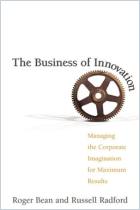
Customer Focused Process Innovation
Linking Strategic Intent to Everyday Execution
Recommendation
Why do so many established companies fail to adapt to changing markets? Consultant David Hamme blames the conventional corporate structure. In a hierarchical organization, he argues, staff members strive to satisfy management rather than customers. This structure partitions processes among departments, leaving the workflow vulnerable to miscommunication, conflicting priorities and turf wars. Hamme calls for upending the entire structure, organizing around processes not positions, and allowing customers, not executives, to set the company’s direction. Rather than using an assembly-line approach to operations, appoint managers to each take ownership of a process and guide it from design to delivery. Hamme offers many fascinating ideas, but like other management-theory authors, he can obscure his most trenchant points with convoluted language. Readers may also wish for more concrete examples of how a manager should shepherd a process across departments. Nevertheless, given the great merit of his concepts, getAbstract recommends Hamme’s useful guide to leaders of established companies, investors and entrepreneurs seeking to encourage their organizations’ agility and responsiveness.
Summary
About the Author
Former management consultant at Ernst & Young and The North Highland Company, David Hamme founded Ephesus Consulting in North Carolina.

























Comment on this summary or Начать обсуждение